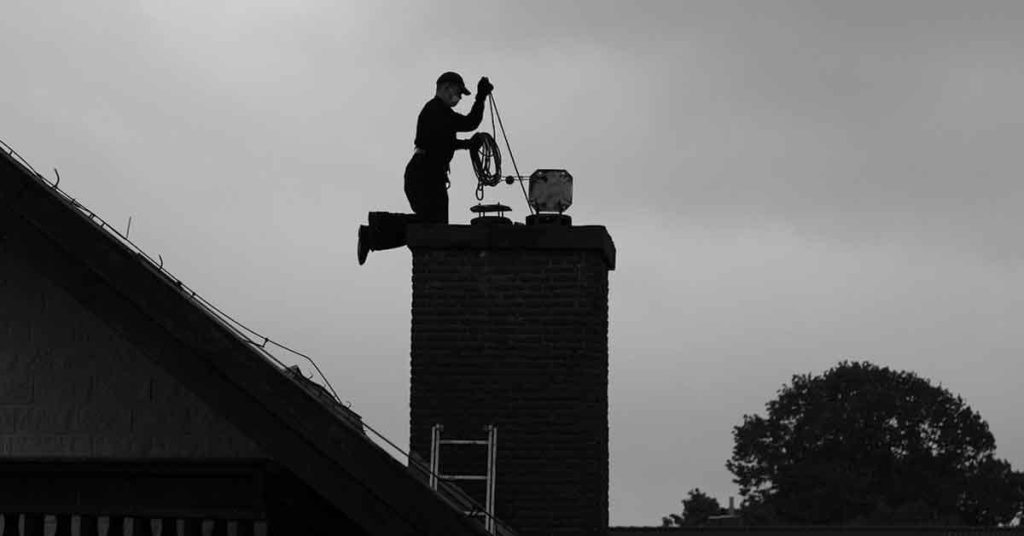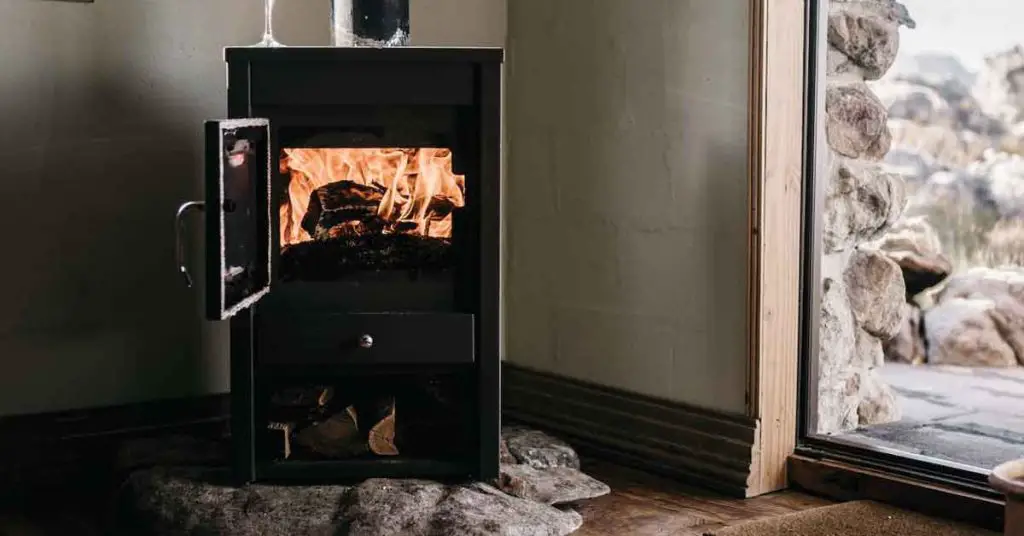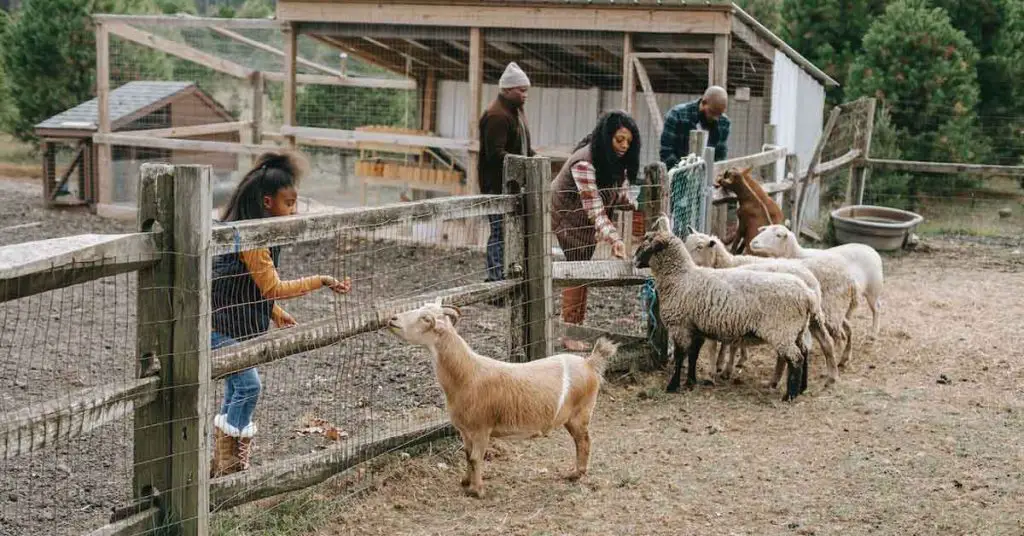Introduction
In this article, we will discuss how to heat your homestead with a wood-burning stove. Finding an effective and environmentally acceptable method of heating your home becomes crucial as homesteaders work to live more sustainably and independently. Wood-burning stoves are growing in popularity and have several advantages for people who want to heat their property in a way that is consistent with their values. To assure safety and efficiency, this article will go over the benefits of utilizing a wood-burning stove for heating, briefly describe how these stoves operate, and stress the significance of correct installation and maintenance.
Advantages of Heating with a Wood-Burning Stove
Utilizing firewood, a plentiful and frequently locally obtained fuel, wood-burning stoves provide an affordable and renewable heat source. These stoves use the warmth and consistency that wood combustion offers, making them a popular alternative to other heating systems. Additionally, since burning wood only releases as much carbon dioxide as the tree absorbs during its lifetime, wood-burning stoves can aid in lowering your carbon footprint.
Overview of the Operation of a Wood-Burning Stove
A wood-burning stove works by establishing a regulated combustion environment and heating the space around it with the heat produced by burning wood. Because of the stove’s design, combustion is efficient and thorough, releasing fewer hazardous emissions while producing more heat. A wood-burning stove’s advantages can only be fully reaped, though, if it is installed and maintained correctly. In addition to lowering the risk of fire threats and associated health problems, this ensures the safety and effectiveness of your heating system.
Importance of Appropriate Setup and Upkeep
To assist you in making an informed choice and heating your homestead as sustainably and effectively as possible, we will go into greater detail in the following sections on the procedure for selecting, installing, and maintaining a wood-burning stove.
The Best Wood-Burning Stove Selection
It’s essential to consider several things when choosing a wood-burning stove for your homestead to ensure that your decision is appropriate for your needs, preferences, and values. We will go through the many types of wood-burning stoves that are out there, sizing and capacity issues, material and construction details, efficiency, and emissions ratings, and more in this section.
Wood-Burning Stove Varieties
The various types of wood-burning stoves available include:
- Traditional wood stoves: These have a conventional design and often need manual temperature and airflow control.
- Catalytic wood stoves: By generating heat from unburned gases and particles, these stoves, which have a catalytic combustor, can operate more efficiently, and produce fewer emissions.
- Non-catalytic wood stoves: These stoves employ a secondary combustion system instead of a catalyst to increase efficiency and lower pollution.
- Pellet stoves: Pellet stoves burn compressed wood pellets rather than firewood, providing a cleaner burn and more precise temperature control.
Concerns for Capacity and Size
Your wood-burning stove’s dimensions and heating capability must be considered. A stove that is too tiny might not produce enough heat, while a stove that is too large might overheat and waste fuel. You must consider your homestead’s insulation, layout, and square footage of the area you intend to heat while choosing the appropriate size.
Construction and Raw Materials
Cast iron, steel, and soapstone are just a few materials that can be used to make wood-burning stoves. Each material has benefits and disadvantages:
- Cast iron: This time-honored material has excellent heat retention and even distribution but can crack easily and needs more upkeep.
- Steel: Compared to cast iron stoves, they are often lighter and heat up more quickly, albeit they may only hold heat for a short time.
- Soapstone: Although it can be more expensive and difficult to locate, this natural material has a distinctive look and excellent heat retention and distribution.
Ratings for Efficiency and Emissions
It is crucial to consider a wood-burning stove’s efficiency and emissions ratings. Stoves with higher efficiency will burn less wood, saving you money and time while lessening your influence on the environment. For stoves that release the fewest pollutants and improve indoor and outdoor air quality, look for ones that meet or exceed the Environmental Protection Agency’s (EPA) emission criteria. You may select the best wood-burning stove to heat your property efficiently, sustainably, and safely by carefully considering these criteria.
Installation and Security Measures
Ensuring a wood-burning stove is installed correctly and following safety procedures is essential if you want to use one on your homestead. The requirements for chimneys and venting, fireproofing, and floor protection, as well as municipal laws and permits, will all be covered in this section.
Suitable Positioning and Clearance
The correct position is essential for a wood-burning stove to be safe and distribute heat effectively. To maximize heat circulation in your house:
- Choose a central place.
- Ensure there is enough space between the stove and combustible objects such as furniture, curtains, and walls.
- Consider the model of your stove and the materials used in your home when determining the required clearance, then adhere to the manufacturer’s recommendations.
Criteria for Venting and Chimneys
Your wood-burning stove must operate safely and effectively, which means having a correctly planned and installed chimney. The chimney should be at least three feet above the roof’s highest point and have a good cap to keep out rain, snow, and debris. Stovepipes that link stoves to chimneys should be constructed of heavy-gauge or stainless steel and sealed correctly to avoid leakage. To ensure proper drafting, maintain an upward slope and check that the stovepipe’s diameter corresponds to the stove’s exit.
Protection for Floors and Fireproofing
Putting enough fireproofing and floor protection around your wood-burning stove is crucial to lowering the chance of fire. Subsequent to the stove, install a fire-resistant hearth pad or floor protector composed of non-combustible materials like tile, stone, or metal. Doing this can shield your floor from flames, sparks, and embers. To further limit the fire risk, consider adding fire-resistant wall shields or utilizing non-combustible wall materials behind and around the stove.
Local Laws and Authorizations
A wood-burning stove should only be installed if it complies with all applicable municipal building codes, rules, and permit requirements. Wood-burning stoves may be prohibited in some places, while inspections, certifications, or special installation techniques can be needed in others. You may ensure a secure and reliable heating solution for your homestead while reducing potential risks by adhering to these safety procedures and local laws.
How to Use a Wood-Burning Stove
To maximize its heating capability and reduce potential risks, your wood-burning stove must be operated effectively and adequately. This section will cover how to choose the best firewood, start, and keep a fire, manage heat output and burn time, and safely use a wood-burning stove.
Choosing the Appropriate Firewood
Selecting suitable firewood is essential for your wood-burning stove to operate as well as possible. Choose hardwoods like oak, hickory, or maple instead of softwoods like pine or spruce since they produce more heat and burn longer. To prevent creosote development and ensure a cleaner burn, ensure your firewood is dry, seasoned, and has a moisture percentage of under 20%.
Establishing and Tending a Fire
Start with tiny bits of dry kindling or crumpled newspaper to start a fire in your wood-burning stove. As the fire builds, add increasingly more significant pieces of wood, positioning them to achieve proper airflow. To maintain appropriate airflow and guarantee effective combustion, regularly clear ashes. Always use a metal ash container with a lid and store it far from combustibles.
Controlling the Burn Time and Heat Output
Learn how to change the air intake vents or dampers to regulate the heat produced and the burn time of your wood-burning stove. The fire burns hotter and faster when the vents are opened while doing the opposite when closed results in a more extended, more controlled heat output. Try out several vent settings to find the one that best suits your heating requirements.
Guidelines for Using a Wood-Burning Stove Safely
To reduce dangers when using your wood-burning stove, remember this general safety advice:
- Install and keep up your home’s smoke and carbon monoxide detectors.
- Maintain a fire extinguisher in good working order and keep it close by.
- To reduce creosote buildup, regularly inspect and clean the stovepipe and chimney.
- Use a stove thermometer to keep an eye on the temperature and prevent overheating.
- Ensure the fire is out before going to bed or leaving the house, and never leave a fire unattended.
- Keep kids and animals away from the stove and warn them about the dangers of fire and burns.
According to these recommendations, you may use a wood-burning stove to heat your homestead safely and effectively while taking pleasure in the pleasant ambiance it creates.
Upkeep and Maintenance
Your wood-burning stove must be properly maintained and cared for to operate safely and effectively. This section will address seasonal preparations and storage, routine cleaning and inspection, chimney care, and preventing creosote buildup.

Regular Inspection and Cleaning
Conduct routine cleaning and inspections to keep your wood-burning stove in good condition. After every few burns, remove the ashes from the firebox to preserve appropriate ventilation and combustion. Ensure the door gaskets are sealed tightly and look for any wear or damage. To maintain visibility and keep an eye on the fire, clean the stove’s glass door with a soft cloth and an authorized glass cleaner.
Maintenance of Chimneys and Prevention of Creosote Development
A chimney fire risk factor is the buildup of creosote, a highly explosive residue of wood combustion, in your chimney over time. Burn only dry, seasoned firewood and keep a hot, effective fire to avoid creosote development. A professional chimney sweeper should inspect and clean your chimney regularly, perhaps more frequently, if you use your stove often.
Replacing Rusted or Broken Components
Various parts wearing out or developing damage may impact your wood-burning stove’s performance and safety over time. Check for evidence of wear or damage on the stovepipe, door gaskets, firebricks, and baffle plates and replace them as necessary. Refer to your stove’s handbook for instructions on part replacement and where to find appropriate parts.
Preparations and Storage for the Season
After the heating season, thoroughly clean and check your wood-burning stove to get it ready for storage. The firebox, glass door, and stovepipe should all be cleaned with the ashes. Check the stove for any wear or damage that might need to be repaired before the upcoming heating season. In the off-season, seal the chimney with a cap to keep out debris, rain, and animals. Any extra firewood should be kept in a dry, well-ventilated location so it can season for the upcoming winter.
You can increase the lifespan of your wood-burning stove and make sure that it continues to be a reliable, safe, and effective source of heat for your homestead by adhering to these maintenance and care instructions.
Using a Wood-Burning Stove in Combination with Other Heating Techniques
For your homestead, a wood-burning stove can be a great primary heat source but combining it with additional heating techniques can help assure consistent warmth and energy efficiency. This part will cover emergency heating choices, using a wood-burning stove with a central heating system, and how insulation and passive solar architecture can enhance heating efficiency.
Combining a Central Heating System and a Wood-Burning Stove
A wood-burning stove can augment your homestead’s central heating system, such as a furnace or boiler, by generating additional heat. This may lessen your dependency on fossil fuels and help you spend less money on heating. Consider adding a programmable thermostat that regulates the central heating system based on the wood-burning stove’s heat output to improve both systems’ efficiency. By doing this, the central heating system will only turn on when the heat from the wood burner is insufficient.
Alternatives for Emergency Heating
A wood-burning stove can be a dependable source of heat, but you should also have backup heating systems in case of emergencies or when you can’t care about the fire. Electric space, portable propane, and kerosene heaters are also possible fallback alternatives. Follow the manufacturer’s recommendations for proper use and ventilation, as each option has specific safety issues.
Insulation and Passive Solar Design to Optimize Heating Effectiveness
The design and insulation of your home can considerably impact the effectiveness of your wood-burning stove and other heating systems. Designing your home to maximize southern exposure and using thermal mass to store heat are examples of passive solar principles that can help you capture and hold onto heat from the sun. Also, effective windows, air sealing, and insulation can help prevent heat loss and lower the firewood required to keep a comfortable temperature.
You can build a cozy, energy-efficient, and sustainable homestead that stays warm even during the coldest months by combining your wood-burning stove with different heating systems, using passive solar design, and using insulation and insulating techniques.
Recap: How to Heat Your Homestead with a Wood-Burning Stove
In conclusion, heating your homestead with a wood-burning stove has a lot of benefits, such as cost savings, sustainability, and energy efficiency. To ensure a safe and effective heating system, this article has covered the critical elements of correct installation and safety precautions and the importance of selecting the best wood-burning stove, depending on your unique needs.
Focus on Correct Setup, Use and Maintenance
We’ve also looked at how to use your wood-burning stove to its full potential, including picking the proper firewood, starting, and tending a fire, and comprehending heat management. The effectiveness and dependability of your wood-burning stove as your principal heat source can be further improved with routine maintenance, upkeep, and integration with other heating systems.
Use Wood-Burning Stoves as a Sustainable and Effective Heating Method
We recommend looking at wood-burning stoves as a sustainable and effective option to help you build a warm, comfortable, and environmentally friendly living space as you consider heating options for your homestead.
If you enjoyed reading this article, you will also enjoy our comprehensive guide on How to Take Your Homestead Off-Grid.
Disclaimer: The information provided in this article is for general informational purposes only and is not intended to be a substitute for professional advice. The author of this article does not claim to be an expert in homesteading and the information provided should not be relied upon to make decisions about your own homesteading journey. Please do your own research and consult with a qualified professional before making any decisions about your homestead.
Share via:
Shaun Alexander is the main writer and editor for HomesteadingSimple.com. With a strong passion for homesteading and sustainability, Shaun has dedicated his life to learning and sharing information about a simple, fulfilling existence tied to the land. His expertise ranges from gardening and livestock management to off-grid living and DIY projects, reflecting the diverse skills necessary for a successful homesteading lifestyle. Shaun’s goal is to inspire and educate others about the possibilities of homesteading, whether in rural, suburban, or urban settings, and to provide practical advice and tips for both beginners and seasoned homesteaders. He believes in a future where more people return to their roots, embracing a life of self-sufficiency and harmony with nature.





